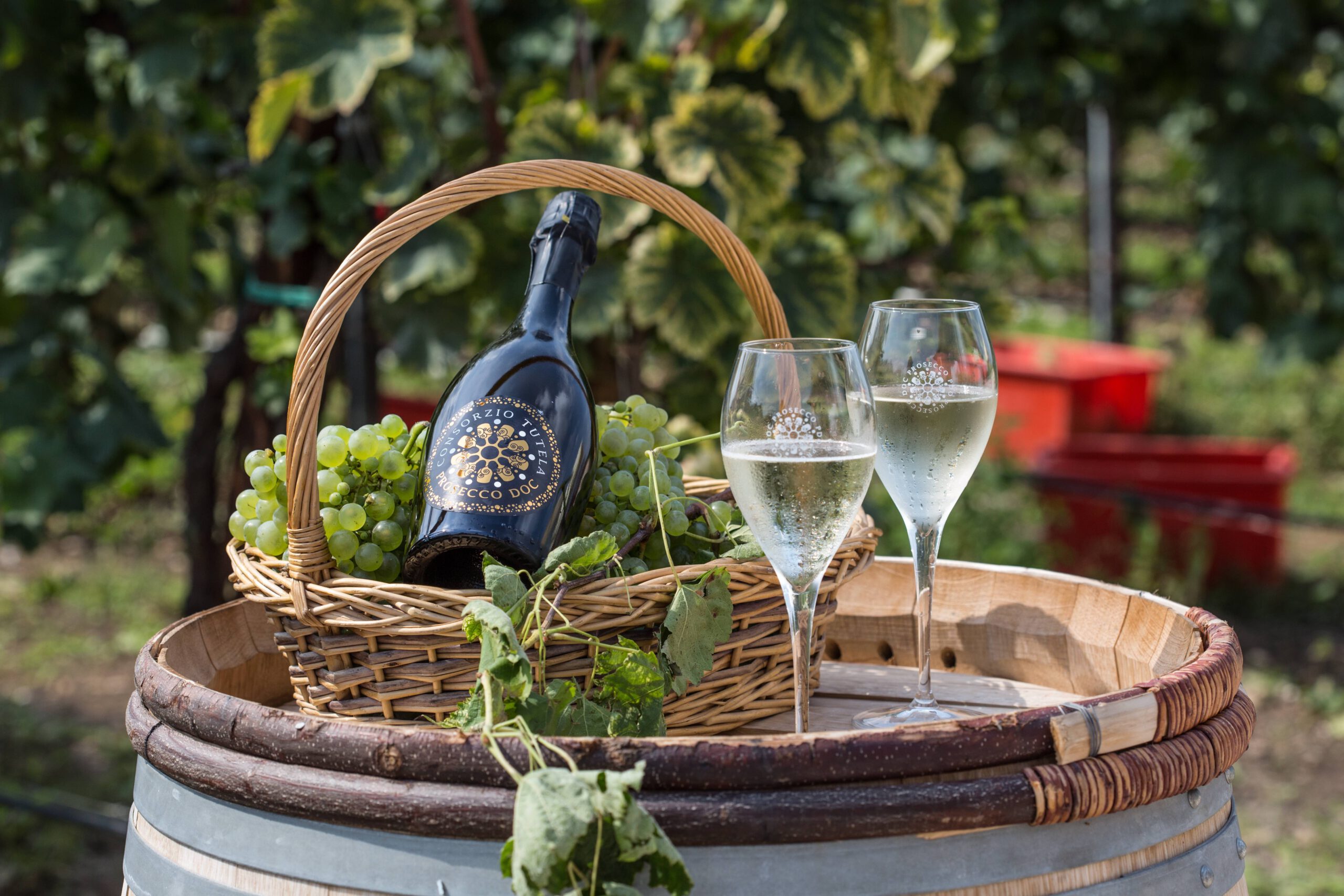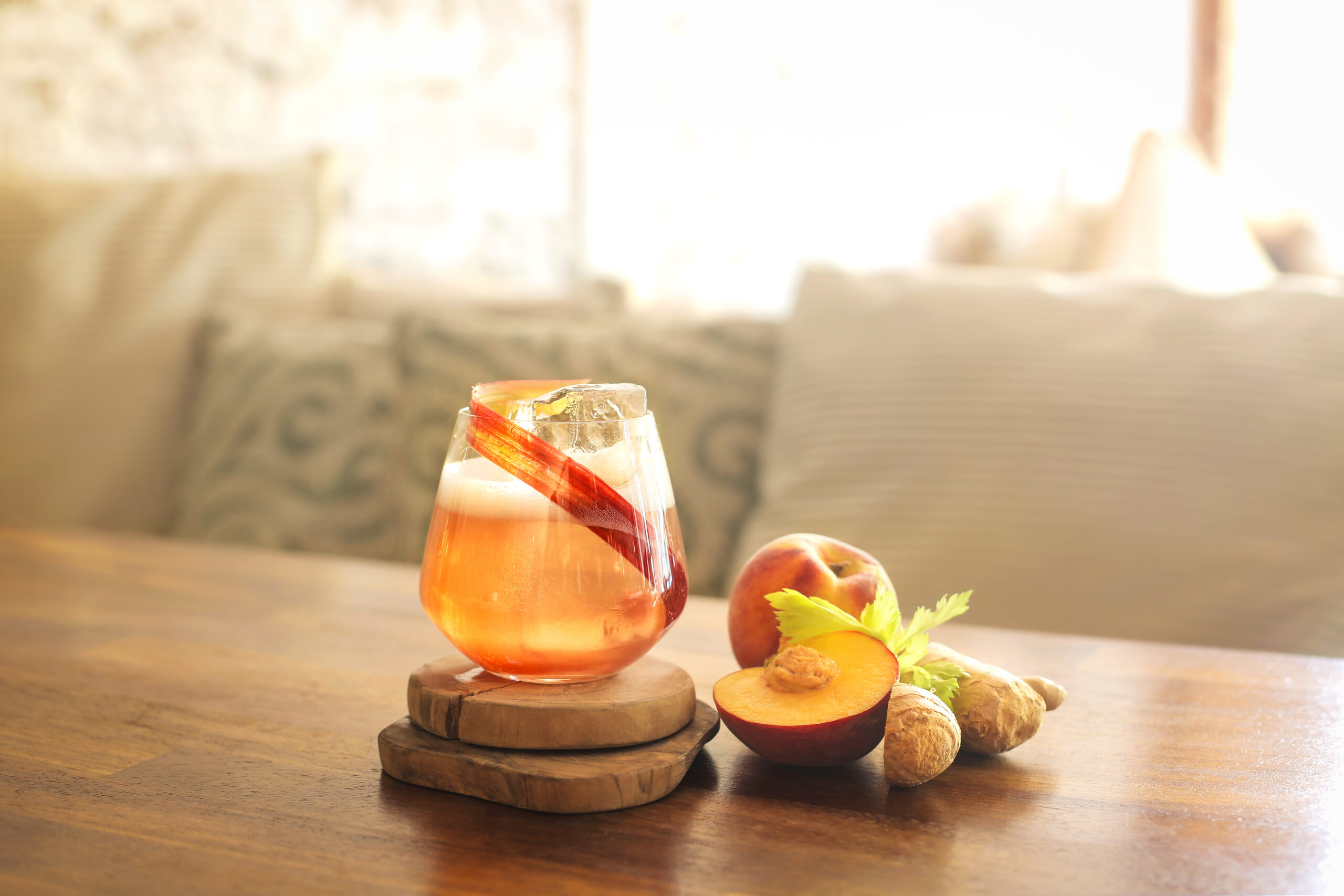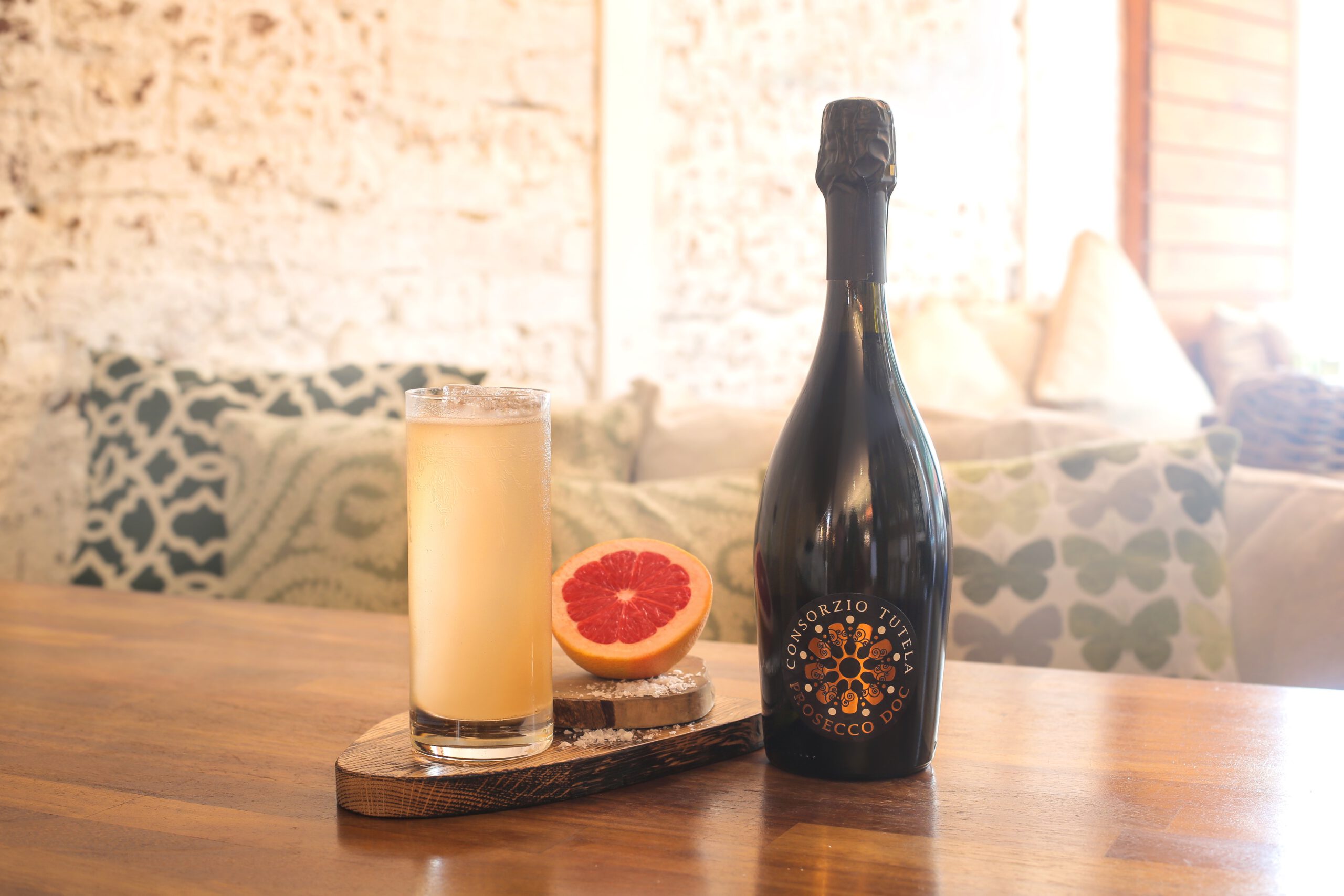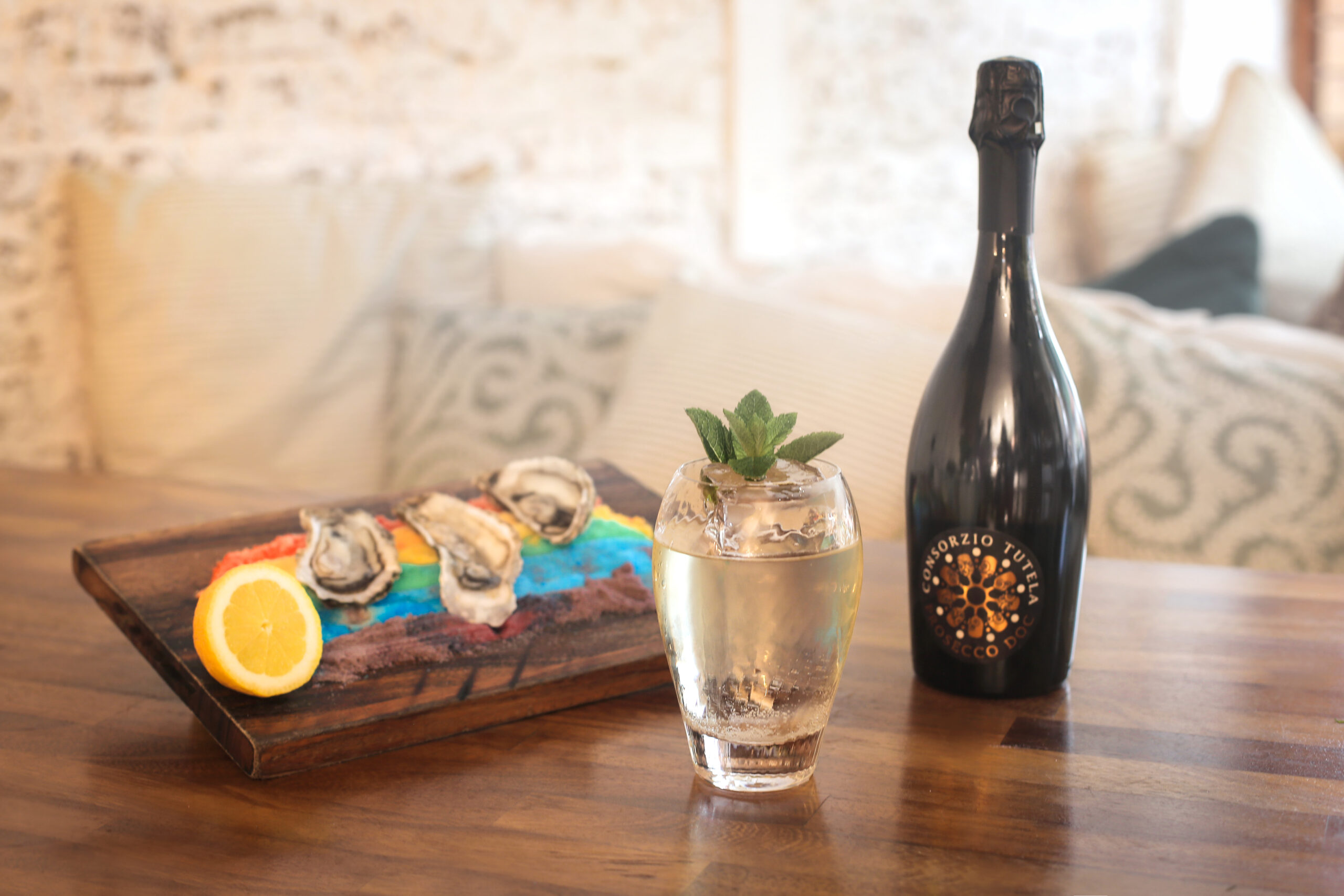
Pull the cork on the clichés: Prosecco can be cool, high-quality and as a premiere now even: Rosé. I tried it with two other Prosecco DOC glass fun makers and present you not only these sparkling insider tips, but in the little guide also everything important that you should know about Prosecco enjoyment.

Prosecco. As a man, you probably associate it even more with girls’ nights out, Tupper parties, or stays at the powder pink ranch with Bully Herbig’s character Abahachi. Again, there’s a risk of having had a bad experience in the past with sweet-sticky mass-produced stuff that may not have even come from the original growing area or even the can. But if you let a bad experience spoil future enjoyment, it’s a shame because you’re really missing out. A good authentic Prosecco from the real region is a real glass fun maker par excellence. I can say that now with a clear conscience, because I have faced the “bad experience therapy”, with the support of Prosecco DOC made a small crash course and present you here not only the most important tips to recognize good Prosecco and so to find your future sparkling wine glass fun maker from Bella Italia (by the way, also very nice as a basis for cocktails), but also give you three secret tips to hand. Among them even a rosé variant, which has just celebrated its premiere.
Prosecco DOC
The name Prosecco denotes a protected designation of origin (DOC = Denominazione di Origine Controllata), which was officially recognized at the European level in July 2009. Prosecco DOC is produced in a specific geographical area – in the northeast of Italy – famous for this specific wine. The winemakers observe strict rules. Thus, the designation of origin is used only by producers who comply with the rules for naming, production, vinification, processing, consumption characteristics, packaging and labeling. The unique environmental conditions, the extensive knowledge of local winemakers and their passion and attention to detail make Prosecco DOC what it is today: an excellent quality wine that can be enjoyed by every generation. From wine climber to grandma. Its floral aroma, hay-yellow color and persistent perlage are the main characteristics of this distinctive wine, with aromas of apple and pear.
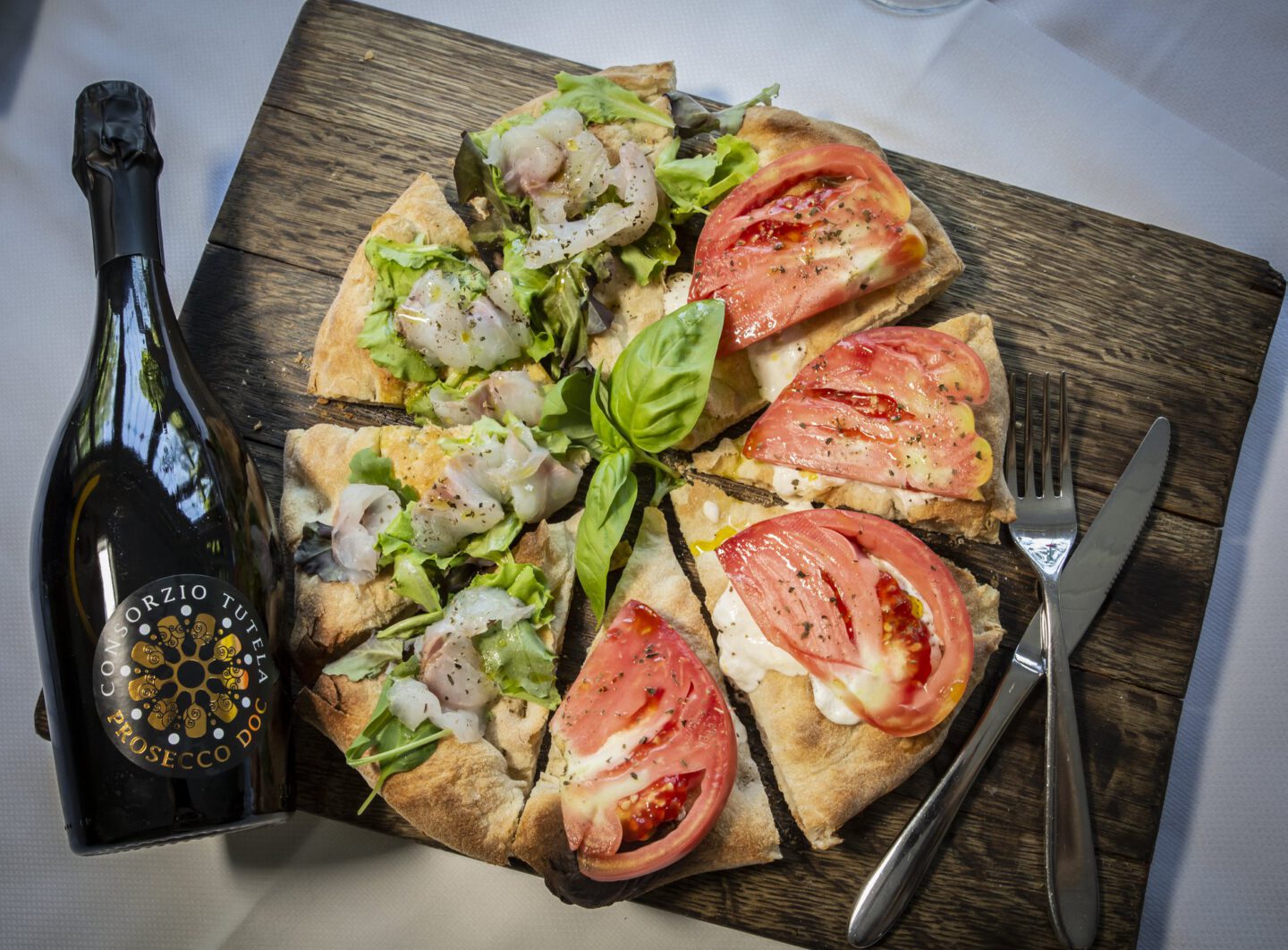
The Consortium Prosecco DOC is the institution in charge of the management of the Controlled Denomination of Origin. It was founded on November 19, 2009, shortly after Prosecco was recognized as a wine with a controlled designation of origin on July 17, 2009. The aim of the Consortium is to bring together producers, individual growers and members, wine producers and sparkling wine producers on a voluntary basis to guarantee the development of the denomination and compliance with the rules provided.
Production area
The vines that give rise to Prosecco are found exclusively in northern Italy, between the Dolomites and the Adriatic Sea. From the special interaction between climate, soil and winemaking tradition is born Prosecco DOC. Its history goes back to the Romans, but it became a sparkling wine as we know it today only at the end of the 19th century. It is grown in two regions – Veneto and Friuli Venezia Giulia – divided into nine provinces: Treviso, Pordenone, Udine, Gorizia, Trieste, Venezia, Padova, Vicenza and Belluno. On 24,450 hectares, 11,460 winegrowers and 347 sparkling wine producers are dedicated to the sparkling fruit salad.
3 variants, 3 classes
There are three different classes of Prosecco. A distinction is made between Tranquillo (still), Frizzante and Spumante. The latter represents the highest category, because Spumante has the finer, more elegant perlage (the tingling and bubbling is smoother).
In addition, the wines are classified as Brut Nature (the most autumnal variety), Extra Brut, Brut, Extra Dry (more residual sweetness) and Dry (highest sugar content). Here it is also important to look carefully so that you can reach for the right shelf according to your preference (or that of future guests). Dry or sweet are not to be classified at first glance – because Dry or Extra Dry is not the dry, but the sweeter variant of Prosecco.
Glass
A fine drink like Prosecco DOC should be served cold in the widest possible champagne goblet at a temperature of 6 to 8 degrees. Contrary to all opinions, a champagne flute is not a suitable glass because it prevents the full diffusion of the aroma.
Drink time
Prosecco DOC is best drunk in the first year after harvest. The bottles should be stored in a dry, cool, dark place away from heat sources and are anything but an ornament to look at for years or a decorative object. They want to be opened and enjoyed!
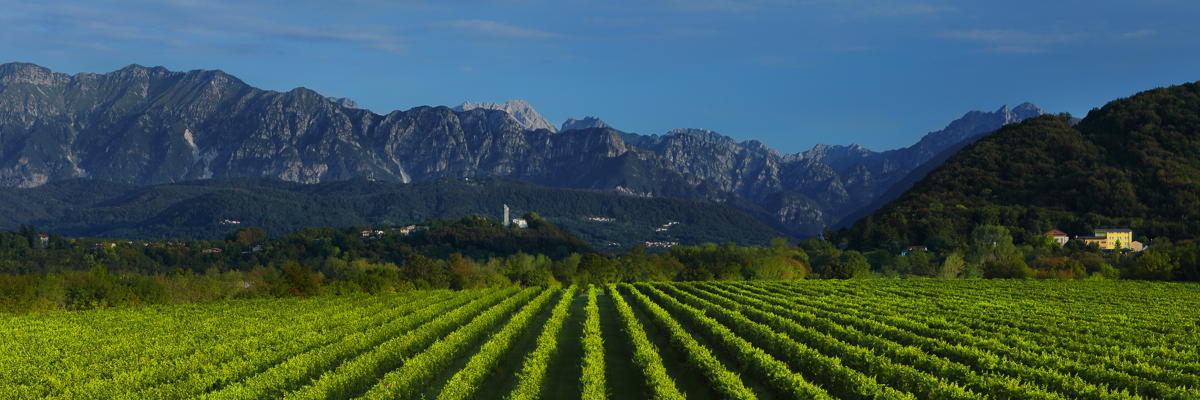
Secret Prosecco tip 1
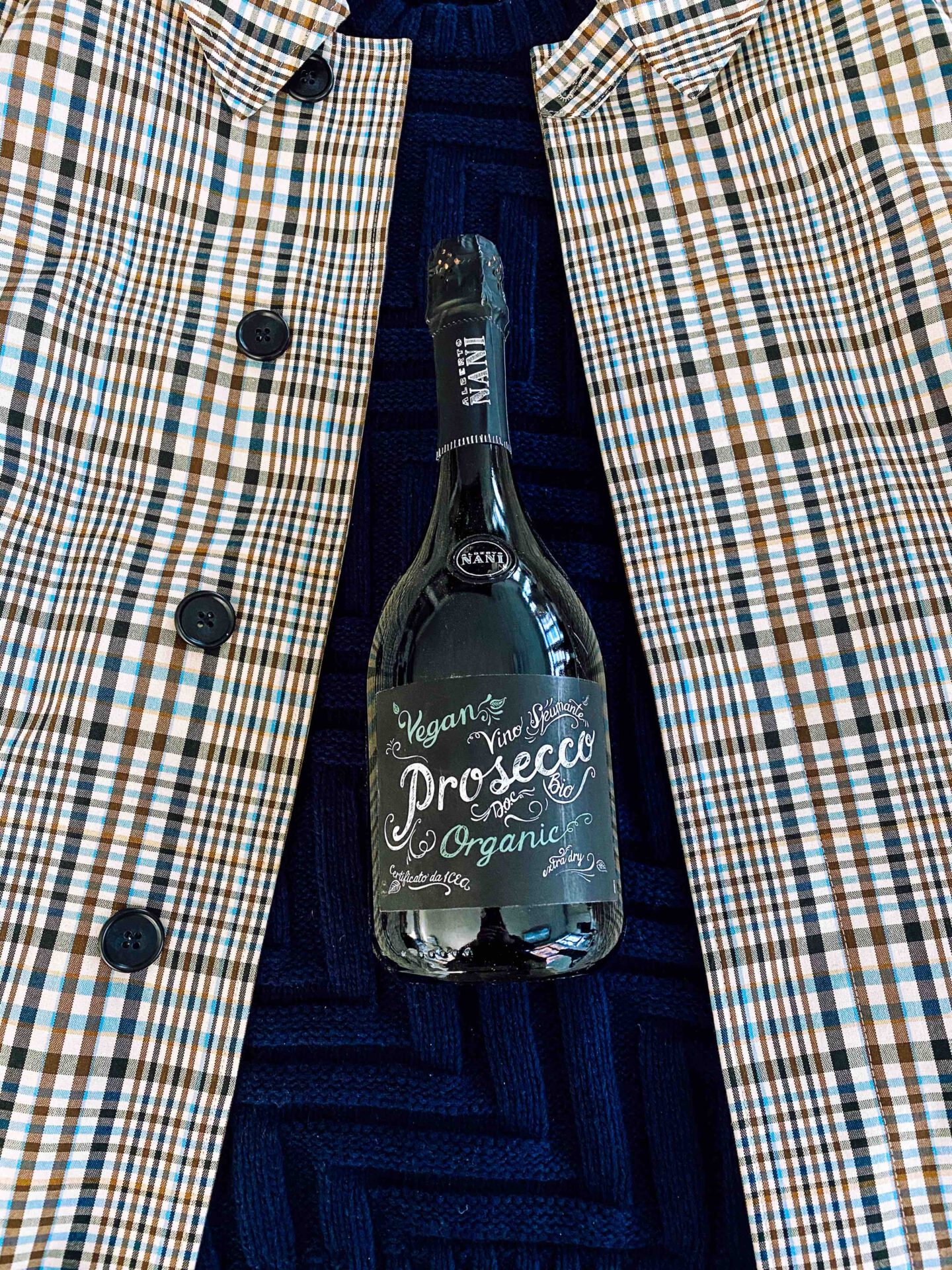
The “Alberto Nani extra Dry Bio” is a prime example of a cool, uncomplicated entertainer that will be remembered.
Yes, cool sparkling wine also goes organic, of course. This Prosecco was served as an aperitif for Christmas dinner and my family was first surprised at how classy and entertaining it tasted, then surprised at how quickly such a bottle can be empty. One immediately smells the typical aromas (a mix of lemon, green apple, pear, rose, bread crust, acacia, banana), but is then from the sweetish past experience in terms of prosecco as far away as Michael Wendler from the DSDS juror place. The organic Prosecco swings smoothly-pearly-foamy with a very fine tingling elegance through the mouth, all nuances seem absolutely coordinated. A cozy-fresh summer soundtrack that goes almost subliminally into the ear and stays there. Has nothing in common with the mistake from the supermarket and just makes a mood. One, two, three bottles in the fridge and you can from date to mother in law for every spontaneous visit what good serve.
Prosecco DOC Alberto Nani extra Dry Bio, Price: 9 Euro, via www.culinaria-shop.com
How to recognize the original Prosecco DOC
Official band
An official band for DOC wines is affixed to the neck of each bottle. In addition to the DOC mark, there is a national coat of arms and a control number that allows the entire production route to be traced. On the back of the bottle, the label must show the logo, the wording Prosecco DOC and the certification of origin Italia – Product of Italy. This must be accompanied by a reference to the geographical area of cultivation if the grapes and bottling take place within the provinces of Treviso and Trieste. Another quality feature is a reference to the producer or bottler, including address and the words “Prodotto in Italia”.
Grapes
Original Prosecco DOC is made from Glera grapes. This grape variety is characterized by robustness as well as a moderate sugar content and gives the wine its sparkling character. At least 85 percent of the final sparkling wine must be made with this variety. In addition, it is possible to use grape varieties such as Verdiso, Bianchetta Trevigiana, Perera, Glera lunga, Chardonnay or Pinot (blanc, gris, noir) with a maximum of 15 percent to customize the flavor profile.
Bottle
The real cult sparkling wine from Italy is only produced and marketed in glass bottles – not in barrels or cans. It’s like at the party: the right dress code is crucial. The bottle must also always show the residual sugar content: brut nature, extra brut, brut, dry, extra dry.
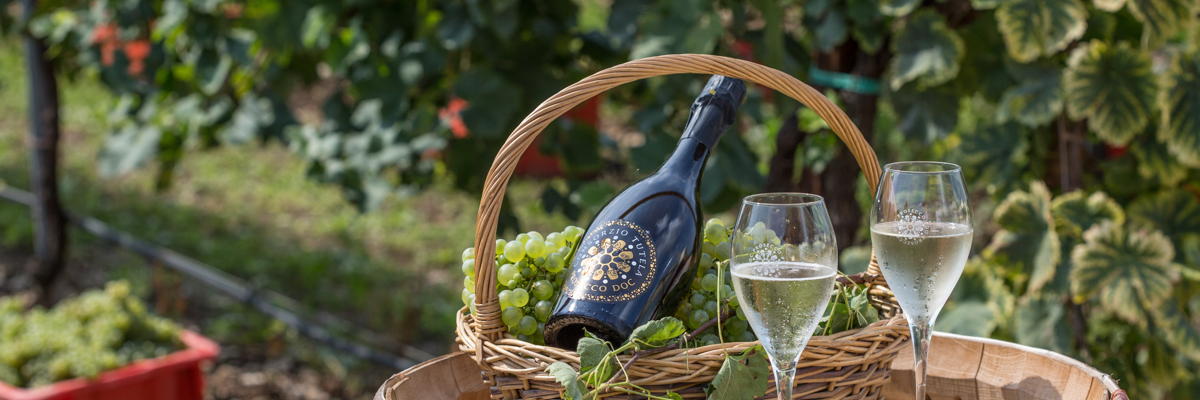
Secret Prosecco tip 2
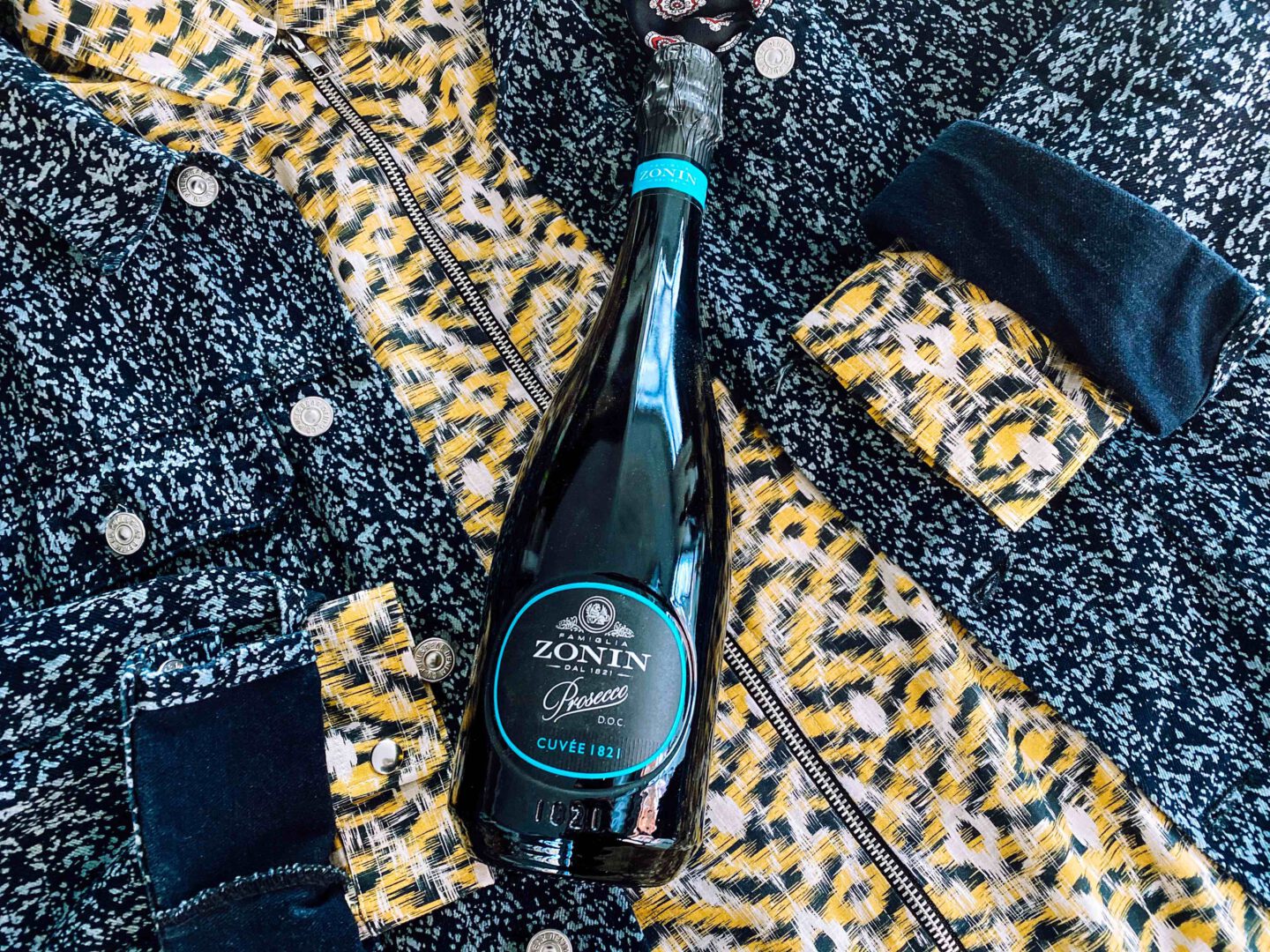
Here already signals the bottle with the glass pleat: Attention, style on a stick coming. And here, too, you get a glimpse of what Prosecco can actually do when it’s produced according to original rules. Imagine a suit. Not a made-to-measure suit, one preferably from a smaller store, a nice fabric, not heavy, quite light, but you notice: someone has chosen with flair. And the suit not only fits casually, but the salesman also gives you one or two snappy sayings, authentic, at eye level. That’s how the Zonin Cuvée tastes. Not out of the ordinary, but smoothly entertaining. The Zonin family looks back on 200 years and seven generations in viticulture. Meanwhile, the name Zonin is synonymous with top-quality Prosecco worldwide. Grown in Veneto, this charming sparkling wine is lively-fresh and wraps notes of floral, apple, pear and melon in a tickle-cool tingle. Easy but classy.
Zonin Prosecco Spumante Cuvée 1821, Price: 9 Euro, via www.hawesko.de

Secret Prosecco tip 3 – debut in rosé
How to surprise and delight your mom? Among other things, with a Prosecco Rosé. The Prosecco DOC growing region has launched the world’s first Prosecco DOC Rosé. Previously vinified only in white, the rosé variant is a cuvée of at least 85 percent Glera and at least ten percent Pinot Nero and is aged on its lees for at least 60 days. It may only be produced as Spumante in the variants Brut Nature -without residual sugar- to Extra Dry -with up to 17 g/l residual sugar-. The term “Millesimato” must be indicated on the label, as well as the reference vintage in relation to at least 85% of the grapes.
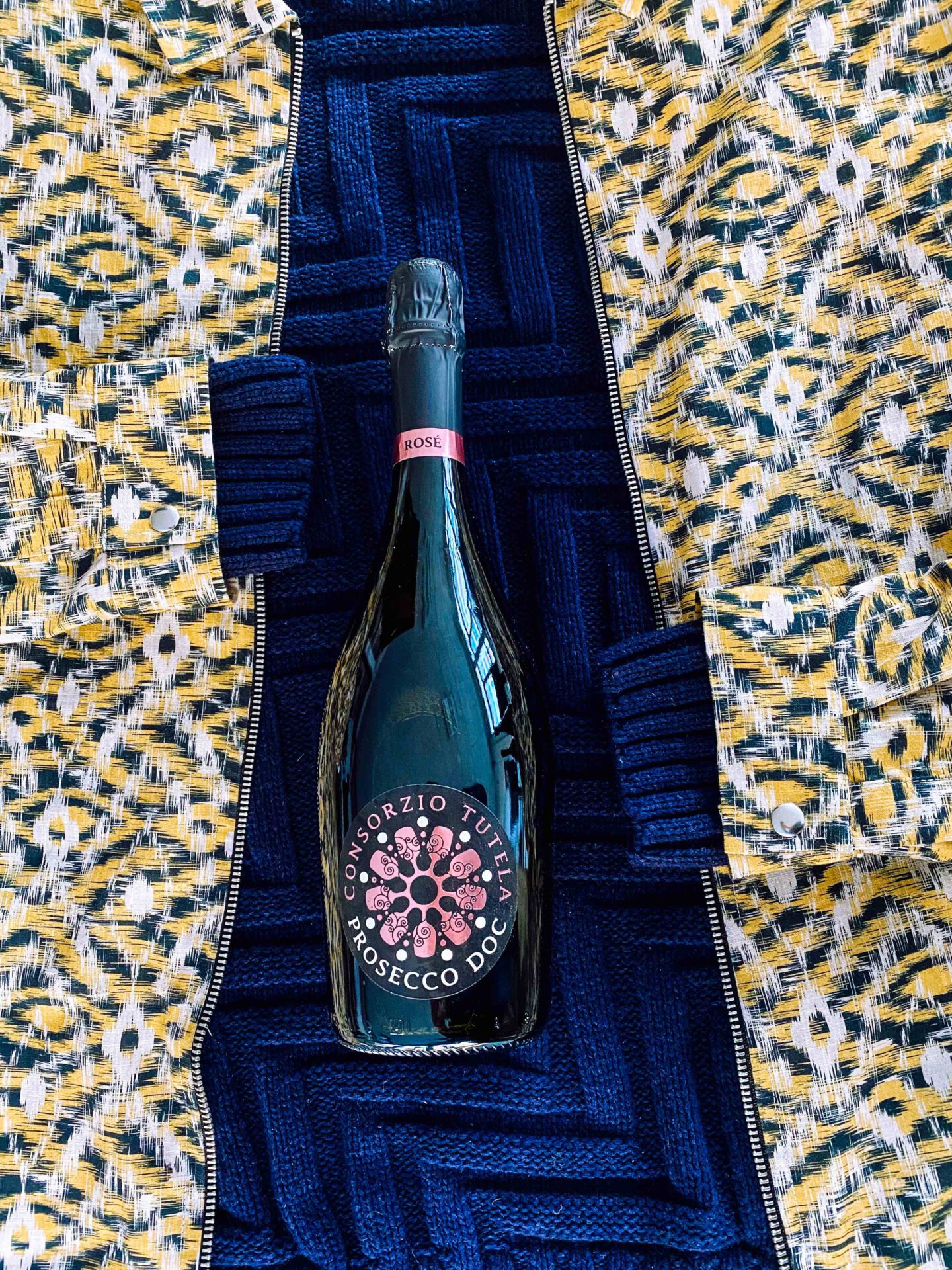
Consorzio Tutela Rosé is like a mix of soccer and music that has delighted the whole family. Like laying on the beach of a “red fruit” sea and enjoying frothy wave after wave of flavor. Buzzin!
I was allowed to take a bottle to the family for Christmas. Result: countless wows, countless bottle infections, countless refills and a sad look when the bottle was empty. But this Prosecco DOC Rosé made for a really cool end to Boxing Day, because we all agreed it was the tastiest conversation in a glass. Very light, delicately sparkling, like a sea breeze full of grapefruit, strawberry and raspberry, lively but casual. My mom would love to sit on a beach chair by the North Sea with this, and I can totally relate. It doesn’t always have to be complicated – prosecco can just be fun when it’s made as classy as this one.
Prosecco DOC Consorzio Tutela Rosé, available soon.

Prosecco DOC as drink
Feel free to mix – really now? Yes, I did some more research. For the producers, it’s not a cultural affront if you put their sparkling wine in your glass as a drink. In fact, it’s very welcome – because it also shows the multifaceted nature of the product and makes it clear that Prosecco can be added to the guest list for any occasion and can pour fun for any situation. In whatever form then. How you could treat the sparkling wine as a drink? Here times a small inspiration selection.
Roman Empire
Not only for rhubarb fans a pleasure – delicious and fruity-fresh. Ingredients:
• 15 ml italian Dry Gin
• 10 ml Grappa
• 10 ml Rhubarb liquor
• 20 ml Peach puree
• Prosecco DOC extra dry
Preparation: Mix all ingredients except Prosecco DOC. Pour into a rocks glass over ice and top with Prosecco extra dry DOC.
Cup DOC
The one that can not miss in the summer! Ingredients:
• 30 ml Italicus-Liquor – typical italian liqueur from bergamot
• 15 ml Grapefruit juice
• Fleur de Sel
• Prosecco DOC brut
Preparation: Mix all ingredients except Prosecco DOC. Pour into a tall glass over ice and top with Brut Prosecco DOC.
Chino
The fresh all-rounder. Ingredients:
• 30 ml Chinotto Nero – non-alcoholic Italian soft drink made from citrus fruits
• 10 ml Martini Ambrato
• Fresh mint
• Prosecco DOC extra dry
Preparation: Mix all ingredients except the sparkling wine. Pour over ice in a highball and top with Prosecco DOC extra dry.
Cheers – und have fun tasting!
